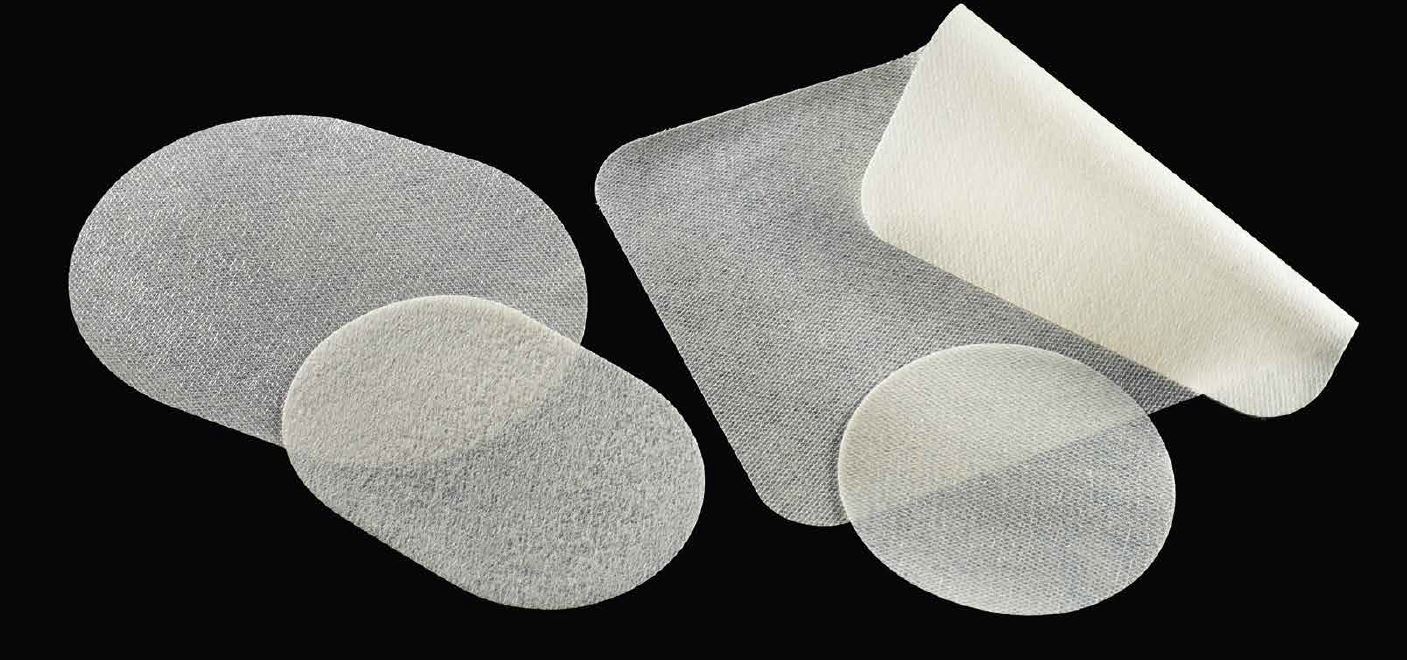W. L. Gore & Associates, Inc. (Gore) has received U.S. Food and Drug Administration (FDA) 510(k) clearance for its GORE SYNECOR Preperitoneal Biomaterial hernia repair device. The Gore SYNECOR portfolio now offers treatment options for the full range of hernia cases, with configurations for both intraperitoneal and preperitoneal placement.
“The hybrid of a permanent synthetic mesh with a long-term bioabsorbable in the GORE SYNECOR Preperitoneal Biomaterial is an innovative solution for preperitoneal hernia repairs, where the device’s placement between tissue layers makes tissue ingrowth especially desirable,” says William S. Cobb IV, MD, FACS.
GORE SYNECOR Preperitoneal Biomaterial is a hybrid, biosynthetic hernia repair solution intended for single-stage preperitoneal, onlay, and retromuscular placements through open, laparoscopic, and robotic applications. It is comprised of three layers: A macroporous knit of dense, monofilament polytetrafluoroethylene (PTFE) fibers provides strength for a durable single-stage repair and minimizes harboring of bacteria, while two surrounding layers of GORE BIO-A Web, a bioabsorbable copolymer scaffold, facilitate tissue ingrowth and vascularization on both sides of the device. Some common applications include: Transversus abdominis release (TAR) procedure, component separation technique, preperitoneal ventral hernia repair, and high-risk ventral hernia repair.

(Image credit: W.L. Gore and Associates)
“I see immense value in the potential of this product to provide a single surgery that offers fast recovery, minimizes remaining material, and may reduce complications, such as mesh splitting and infection, when compared to the multi-surgery staged repairs required in some complex cases,” says Cobb.
GORE BIO-A Web scaffold has a 20-year history of clinical use as a cost-effective and efficient reinforcement for soft-tissue. Studies have shown that GORE BIO-A Web facilitates rapid vascularity that supports generating quality tissue fast. The web scaffold provides a 3-D matrix of interconnected pores that fills quickly with collagen and facilitates a 1:1 tissue generation within the thickness of the material, with complete absorption by the body in approximately six months. In addition, studies have shown that hernia repairs with the biosynthetic scaffold have low long-term hernia recurrence rates with improved quality of life for patients.
Preclinical studies of GORE SYNECOR Preperitoneal Biomaterial demonstrated that the tissue-building scaffold promoted vascularity within seven days and tissue ingrowth within one month. Vascularity within the device and the PTFE fiber design enable treatment options in the presence of contamination, minimizing the need for device removal.
“We tailored the PTFE material’s microstructure, porosity, and form to match this application, making this device distinct even among other hernia repair products,” says David Lane, Business Leader for General Medical Products. “In hernia surgery, total cost of care can vary widely if complications occur, which is why we used a unique combination of high-quality materials to reduce the potential for most common complications. Additionally a biosynthetic product like GORE SYNECOR Preperitoneal Biomaterial can be less than half the cost of commonly used biologic meshes and can be used in place of biologic and permanent, synthetic meshes in clean and clean high-risk patient types, overall providing strong clinical and economic value to providers.”
The GORE SYNECOR Product portfolio of hernia repair solutions also includes GORE® SYNECOR Intraperitoneal Biomaterial, which is being evaluated through an ongoing Clinical Quality Improvement (CQI) Study designed to evaluate the real-world use of the device without exclusion criteria.




